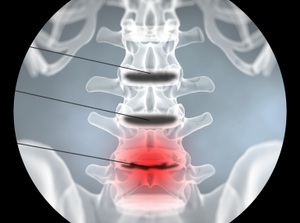Discography
Discography is a diagnostic procedure used to determine which spinal disc is causing back pain, typically in cases of chronic low back or neck pain. It is especially helpful for patients who are considering surgery or other invasive treatments and need to identify the specific disc responsible for their pain. During the procedure, contrast dye is injected into the center of one or more spinal discs, and the response of the patient to the injection, as well as imaging from X-rays or CT scans, helps the doctor determine whether the disc is abnormal and whether it is the source of the pain.
Discography is often recommended when MRI or CT scans alone are not enough to pinpoint the source of the pain, and it can guide surgeons in planning for procedures like spinal fusion.
Discography
This procedure, also called a "discogram," helps your doctor find painful spinal discs. It can show the source of pain in your back. To see how it works, let's watch a discography done in the lumbar spine.
What to Expect for the Treatment?
What to expect during the procedure?
Discography is usually performed as an outpatient procedure under local anesthesia and light sedation. The patient lies on a table while the doctor uses fluoroscopy (X-ray guidance) to carefully insert a needle into the suspected disc(s). Once the needle is in place, a contrast dye is injected into the disc. If the disc is healthy, the injection should cause little to no discomfort. However, if the disc is damaged or degenerative, the injection will often reproduce the patient's typical pain, indicating that the disc is the likely source of their symptoms.
Following the dye injection, imaging studies such as X-rays or CT scans are taken to visualize the dye's spread within the disc, revealing any abnormalities like disc tears, degeneration, or herniation.
Post-procedure care and recovery
After the procedure, patients are monitored for a short time and are typically able to go home the same day. There may be some soreness at the injection site, and the back pain could temporarily increase after the test. Patients are advised to take it easy for a day or two, avoiding strenuous activities. Pain relief medication can be used as needed, and most patients are able to resume light activities within a few days.
The results of a Discography procedure help doctors confirm whether a specific disc is the cause of pain and can guide treatment decisions moving forward. If the test reveals a damaged disc, the patient may be a candidate for further treatments like spinal fusion, disc replacement, or other interventions aimed at stabilizing or repairing the affected area.

Interested in our medical services? We’re here to help!
We want to know your needs exactly so that we can provide the perfect solution. Let us know what you want and we’ll do our best to help.
